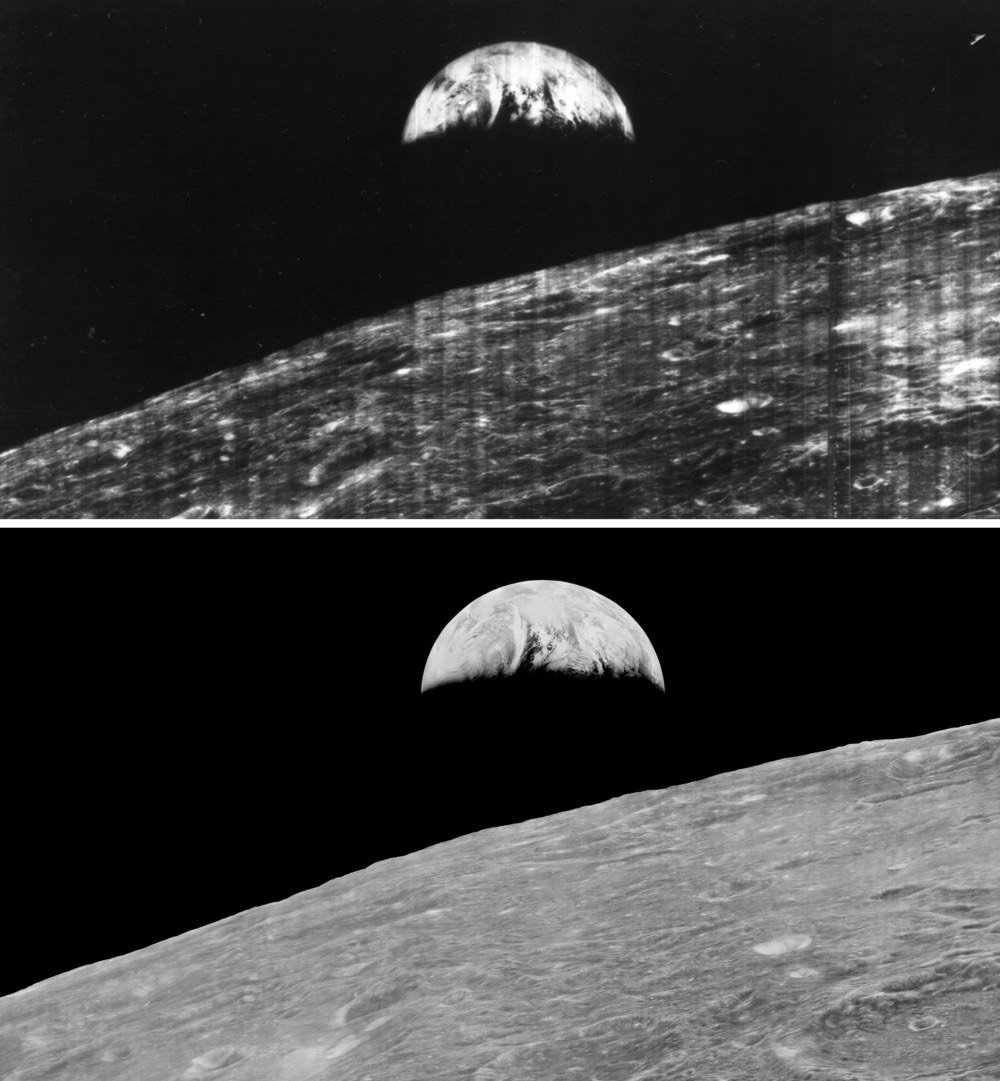Those grainy Moon photos from the 60s? The actual high-res images looked so much better.
In 1966 and 1967, NASA sent five spacecraft to orbit the Moon to take high-resolution photos to aid in finding a good landing spot for the Apollo missions. NASA released some photos to the public and they were extremely grainy and low resolution because they didn’t want the Soviet Union to know the capabilities of US spy satellites. Here’s a comparison to what the public saw at the time versus how the photos actually looked:

The Lunar Orbiters never returned to Earth with the imagery. Instead, the Orbiter developed the 70mm film (yes film) and then raster scanned the negatives with a 5 micron spot (200 lines/mm resolution) and beamed the data back to Earth using lossless analog compression, which was yet to actually be patented by anyone. Three ground stations on earth, one of which was in Madrid, another in Australia and the other in California recieved the signals and recorded them. The transmissions were recorded on to magnetic tape. The tapes needed Ampex FR-900 drives to read them, a refrigerator sized device that cost $300,000 to buy new in the 1960’s.
The high-res photos were only revealed in 2008, after a volunteer restoration effort undertaken in an abandoned McDonald’s nicknamed McMoon.
They were huge files, even by today’s standards. One of the later images can be as big as 2GB on a modern PC, with photos on top resolution DSLRs only being in the region of 10MB you can see how big these images are. One engineer said you could blow the images up to the size of a billboard without losing any quality. When the initial NASA engineers printed off these images, they had to hang them in a church because they were so big. The below images show some idea of the scale of these images. Each individual image when printed out was 1.58m by 0.4m.





Stay Connected